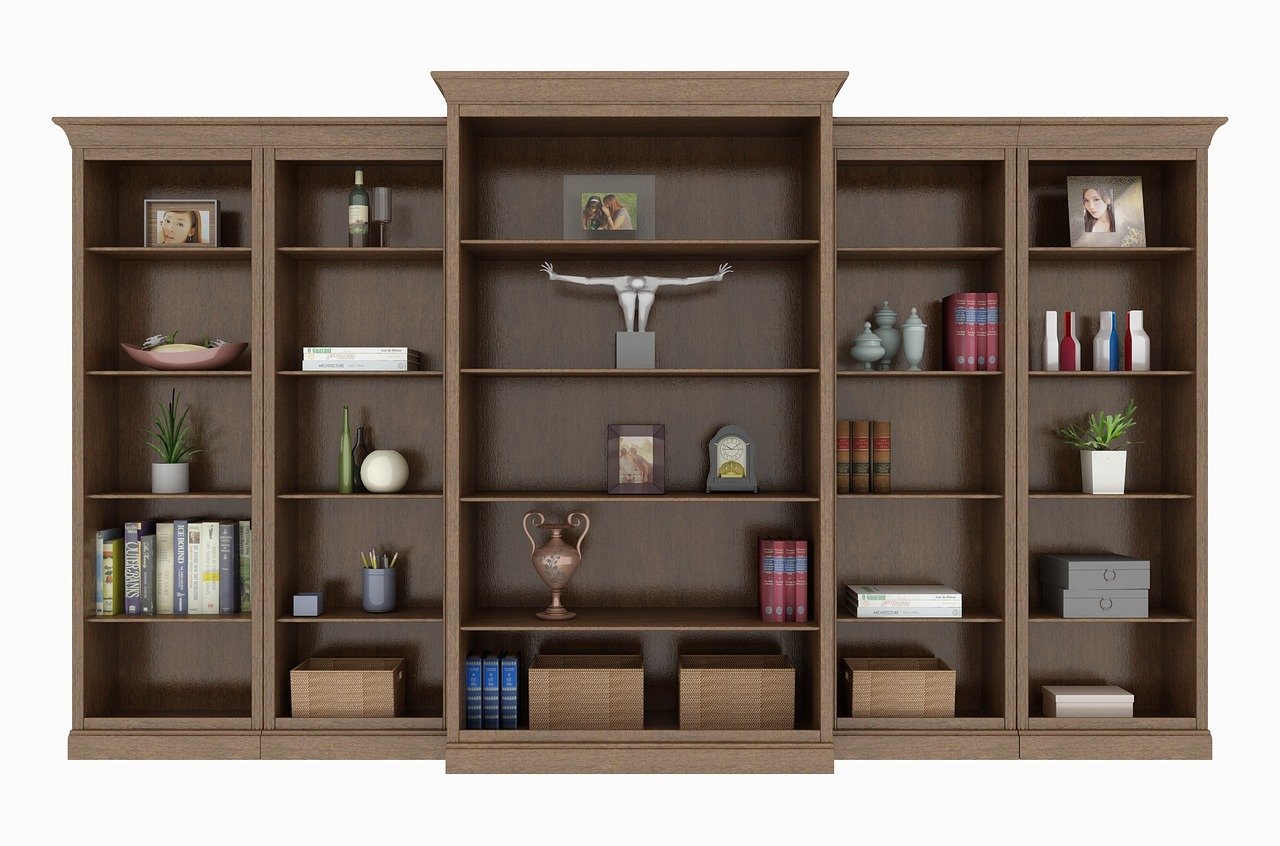A display shelf does more than hold objects. It adds shape, color, and style to your space. Whether you live in a small apartment or a large home, you can use shelves to bring order and personality to a room.
Many people overlook this detail. They see a shelf as plain storage. But with a smart setup, it turns into a design piece. This guide shows how to choose, place, and use display shelves for the best look and function.
What Is a Display Shelf?
A display shelf is any shelf used to hold and show items. It sits on a wall, stands on the floor, or even hangs from the ceiling. It draws attention to what you place on it: books, photos, art, or plants.
Some shelves stay open. Others come with glass covers or doors. You find them in living rooms, kitchens, bedrooms, or offices. A shelf can blend into your design or stand out as a bold feature.
Why Every Home Needs a Display Shelf
Display shelves serve two goals. They help you stay organized. They also let you show what matters to you. When done right, shelves bring warmth and texture to a room.
You don’t need a big space. Even one small wall shelf can lift the mood of a corner. It adds balance and gives your room more shape. You also get more surface without adding clutter.
Open shelves help rooms feel light. They save floor space and draw the eye upward. This creates height and helps smaller rooms feel bigger.
Types of Display Shelves You Can Use
Wall-mounted shelves attach directly to your wall. They stay out of the way and fit well in tight spaces. Most people use them above a couch, bed, or desk.
Freestanding shelves sit on the floor. These work well as room dividers or feature walls. They offer more room and allow access from both sides if placed in open spaces.
Corner shelves fit into tight spaces. They turn an unused corner into a smart design point. These are ideal for plants, candles, or small vases.
Floating shelves have no visible brackets. They give a clean, modern look. You see these often in bathrooms and bedrooms.
Glass display shelves look elegant. They work best in modern or luxury homes. Glass reflects light, which makes a room feel larger Shelf designs at IKEA.
How to Choose the Right Display Shelf for Your Home
Start by looking at your room. Check your wall space, color scheme, and layout. Pick a shelf that fits your needs and blends with your design.
Think about the items you plan to show. If you collect books, choose deep, strong shelves. If you prefer art or small objects, go for narrow, decorative ones.
Match the color of the shelf with your room. Wood shelves add warmth. Black or white shelves keep things clean. Glass or metal shelves add shine and light.
Keep weight in mind. Heavy items need solid anchors and support. Use studs or strong brackets to avoid sagging.
Where to Place Your Display Shelf for Best Impact
Shelves work best when placed at eye level. This draws attention and makes the shelf feel like part of the room, not just an afterthought.
Living rooms often have shelves above sofas or sideboards. These hold art, books, or plants. Bedrooms use wall shelves near the bed for photos and lamps.
In kitchens, shelves replace upper cabinets for a modern look. Use them to store cups, jars, or bowls.
Bathrooms benefit from floating shelves above the toilet or sink. These hold towels, candles, or small baskets.
Offices use shelves to show awards, books, or decor. Place them near your desk to keep supplies close and neat.
How to Style Your Display Shelf Like a Designer
Keep things simple. Use odd numbers groups of three or five look natural. Mix shapes, heights, and textures to create flow.
Place tall items at the back and smaller ones in front. Add one item that catches the eye a bold vase, framed photo, or colorful book.
Don’t crowd the shelf. Leave some empty space. This helps each item stand out. It also keeps your room from feeling messy.
Try layering. Lean a picture frame behind a candle. This adds depth and motion.
Change your shelf with the seasons. Rotate objects every few months. This keeps the room fresh and gives you a reason to refresh your space.
Affordable Ways to Upgrade Your Shelves
You don’t need to spend much. You can build your own shelf with wood planks and wall brackets. And you can paint old shelves to match your decor.
Use found objects—like driftwood or reclaimed boards to give a rustic touch. Add LED strip lights under the shelf for extra mood.
If you rent and can’t drill walls, use tall freestanding shelves or command strip mounts.
Visit local thrift stores. You’ll find small sculptures, vases, or books that look great on any shelf.
FAQs
What is the best material for display shelves?
Wood is popular. It’s strong, warm, and easy to shape. Glass and metal work for modern styles. Choose based on the room and use.
Can I hang shelves without studs?
But use wall anchors rated for your shelf weight. Always test the hold before loading items.
How do I stop shelves from sagging?
Use thick boards and strong brackets. Shorter shelves sag less. Avoid putting all the weight in the center.
How high should I place my shelf?
Place the shelf around eye level, roughly 55 to 65 inches from the floor. Lower in bedrooms, higher in bathrooms.
How can I make my shelf look better?
Use fewer items. Mix heights. Add texture. Stick to a color theme. Change the layout often to keep it fresh.
Also Read: KDArchitects Landscape Ideas by Roger Morph: Smart, Modern Outdoor Design




